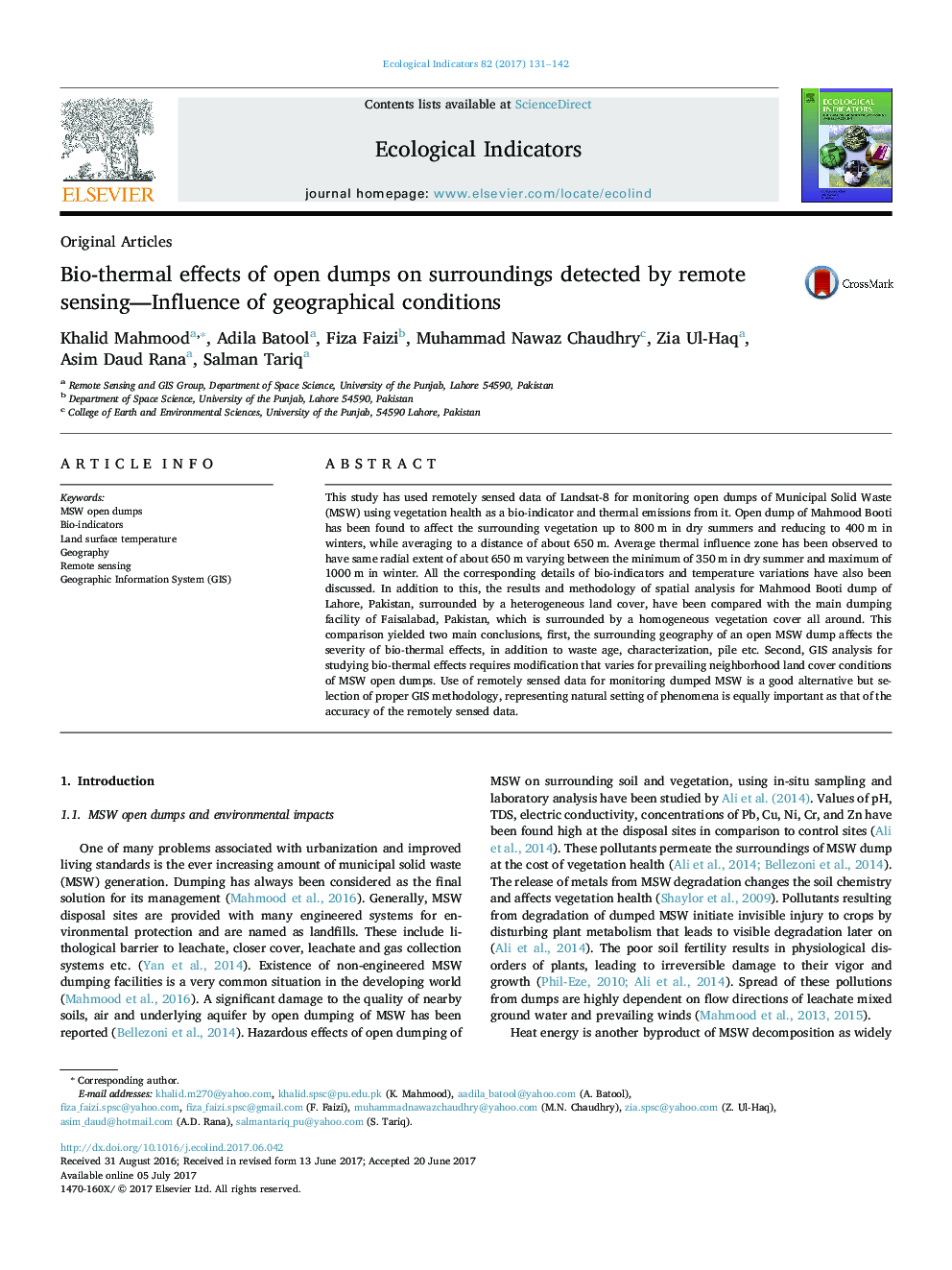| Article ID | Journal | Published Year | Pages | File Type |
|---|---|---|---|---|
| 5741315 | Ecological Indicators | 2017 | 12 Pages |
â¢Remotely sensed satellite data can be used to study bio-thermal effects of MSW open dumps.â¢Use of proper GIS analysis is compulsory to get reliable information from remote sensing data.â¢Neighborhood geography around the dumps determines GIS methodology and intensity of the bio-thermal impacts.â¢A suitable distance from agricultural land should also be consider as one of the main criteria in MSW dumping site selection.
This study has used remotely sensed data of Landsat-8 for monitoring open dumps of Municipal Solid Waste (MSW) using vegetation health as a bio-indicator and thermal emissions from it. Open dump of Mahmood Booti has been found to affect the surrounding vegetation up to 800Â m in dry summers and reducing to 400Â m in winters, while averaging to a distance of about 650Â m. Average thermal influence zone has been observed to have same radial extent of about 650Â m varying between the minimum of 350Â m in dry summer and maximum of 1000Â m in winter. All the corresponding details of bio-indicators and temperature variations have also been discussed. In addition to this, the results and methodology of spatial analysis for Mahmood Booti dump of Lahore, Pakistan, surrounded by a heterogeneous land cover, have been compared with the main dumping facility of Faisalabad, Pakistan, which is surrounded by a homogeneous vegetation cover all around. This comparison yielded two main conclusions, first, the surrounding geography of an open MSW dump affects the severity of bio-thermal effects, in addition to waste age, characterization, pile etc. Second, GIS analysis for studying bio-thermal effects requires modification that varies for prevailing neighborhood land cover conditions of MSW open dumps. Use of remotely sensed data for monitoring dumped MSW is a good alternative but selection of proper GIS methodology, representing natural setting of phenomena is equally important as that of the accuracy of the remotely sensed data.
